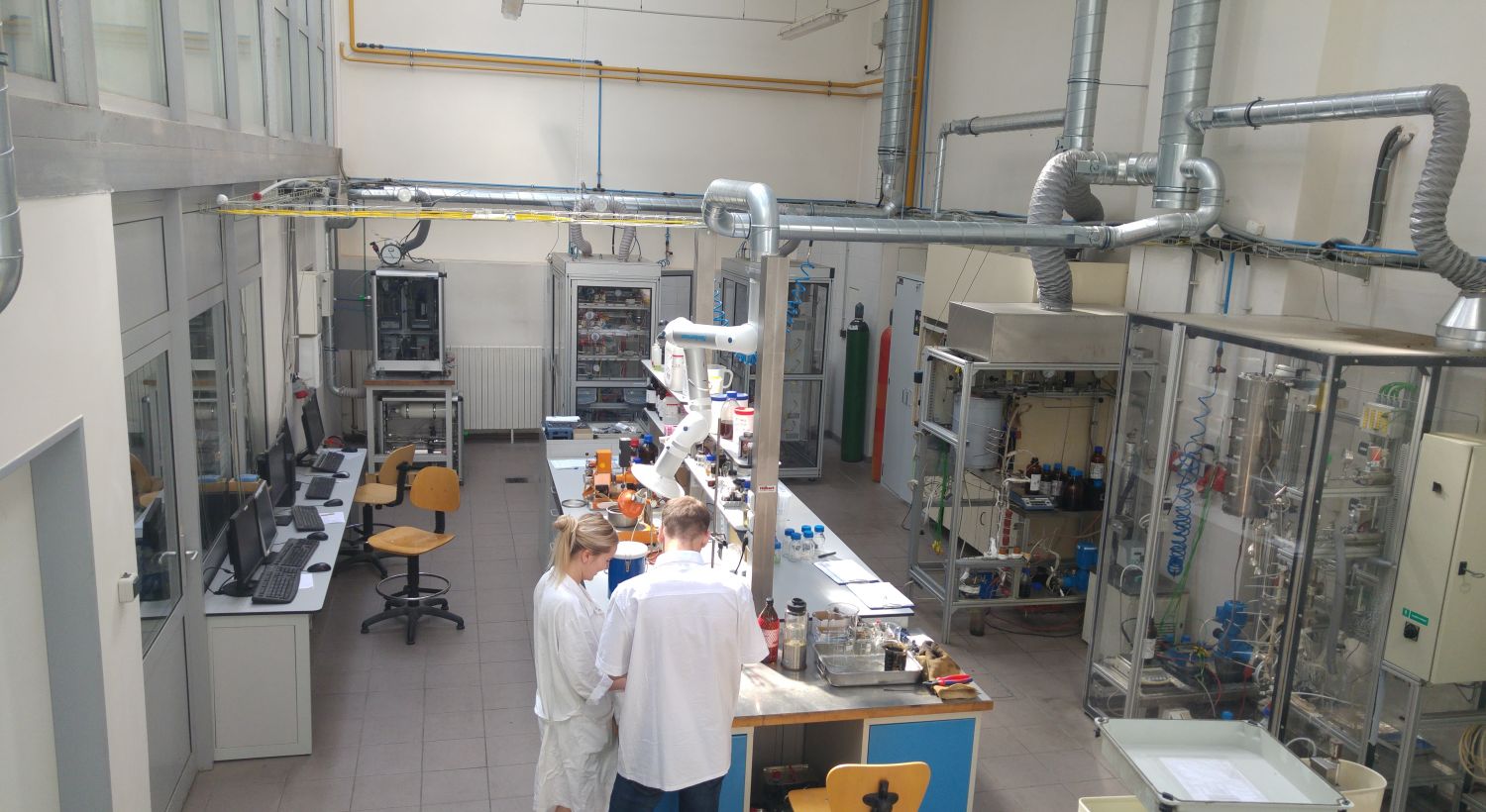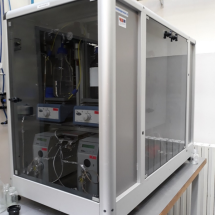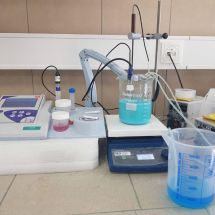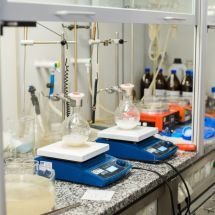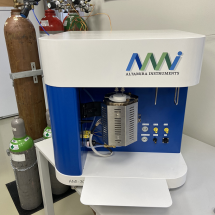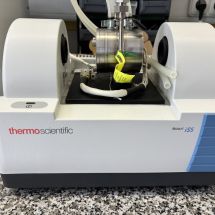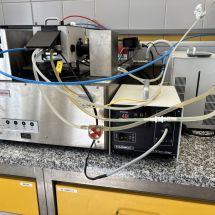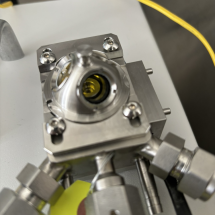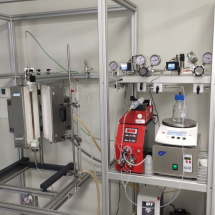Our laboratories and technical hall are equipped with several reactors for catalyst testing as well as equipment for catalyst preparation and characterization.
Reactors
Micro Catalyst Bed unit – This PC-controlled unit is used for hydrogenation under high pressure of various compounds. Two liquids with a gas such as H2 or N2 can be simultaneously fed into the fixed-bed reactor of 11 ml (16 cm x 0.85 cm). The unit can be pressured up to 280 bar while with maximum temperature is 450 °C.
Bench Top Autoclave Reactor – This high-pressure stirred laboratory apparatus is used for diverse catalyst research, catalyst characterization, and surface chemistry studies under a neutral, reductive or oxidizing atmosphere. The autoclave can be pressured up to 200 bar, the maximum operating temperature is 500 °C.
Down-flow fixed-bed tube reactor - This reactor is used for the treatment of solid materials under high-temperature conditions and the study of their catalytic performance. The flow catalytic unit is equipped with: a tubular furnace (a heating zone with a length of 300 mm and a maximum temperature of 1000 °C), gas flow meters and an HPLC pump. This unit is connected to on-line GC.
Flow reactor: The testing unit could be used for 0.1-10 g of catalysts. Two types of reactor could be used – a stainless-steel high-pressure reactor (pressure up to 5.0 MPa) and a glass reactor for testes at ambient pressure. Operating up to 800 °C depending on the temperature. Electronic mass flow controllers are used (0-500 ml/min) with a maximum pressure of 10 MPa. The HPLC pump (0.6-600 ml/h) is used to inject liquids into a pressurized reactor operating in continuous flow mode, while the syringe pump (0.73 µL/h to 2100 mL/h) is used for the glass reactor.
Analytical methods
TPR/TPD/TPO instrument AMI-300 with a TCD and FTIR cell. The unique setup is able to determine catalyst properties such as reducibility or probe acid-base character. Moreover, the catalyst surface could be treated by various organics and their interaction analysed.
Nicolet Antaris IGS and Nicolet iS5 spectrometers equiped DRIFT high-temperature and low-temperature cells and transmission high-temperature cell for measurements from -190 to 900°C under a controlled atmosphere. This could be used for CO or pyridine adsorption to probe surface sites.
ATR-FTIR might be used for structural analysis of solid materials.
ICP-OES is used for the determination of metal leaching from catalysts in an organic matrix.
GC machine Agilent 7820A is used for the analysis of reaction products. The GC unit is equipped with an auto-injection system, a capillary column and FID, and is controlled by the OpenLAB CDS Workstation.
At UCT we have long-lasting and successful cooperation with:
Laboratory for XRF and XRD analysis (S. Randáková)
Laboratory for H2-TPR and nitrogen physisorption (M. Lhotka)
Laboratory for TGA-MS (V. Fíla)
Laboratory for AAS analysis (D. Pokorná)
Laboratory for Raman spectroscopy (L. Lapčák)
Methods
The catalyst preparation is our main focus and we are able to prepare co-precipitated as well as supported catalysts synthesized via a wide range of techniques. The following calcination and reduction in ovens could be done under different atmospheres.
The co-precipitation apparatus is intended for catalyst preparation under controlled temperature and pH values. The apparatus is equipped with: a magnetic stirrer with a hotplate (maximum temperature is 380 °C, maximum stirring speed is 1.500 rpm), benchtop pH-meter (resolution ± 0.01 pH, the maximum temperature is 100 °C) with a glass electrode, 2 peristaltic pumps for co-feeding reactants (maximum output is 100 ml/min).


